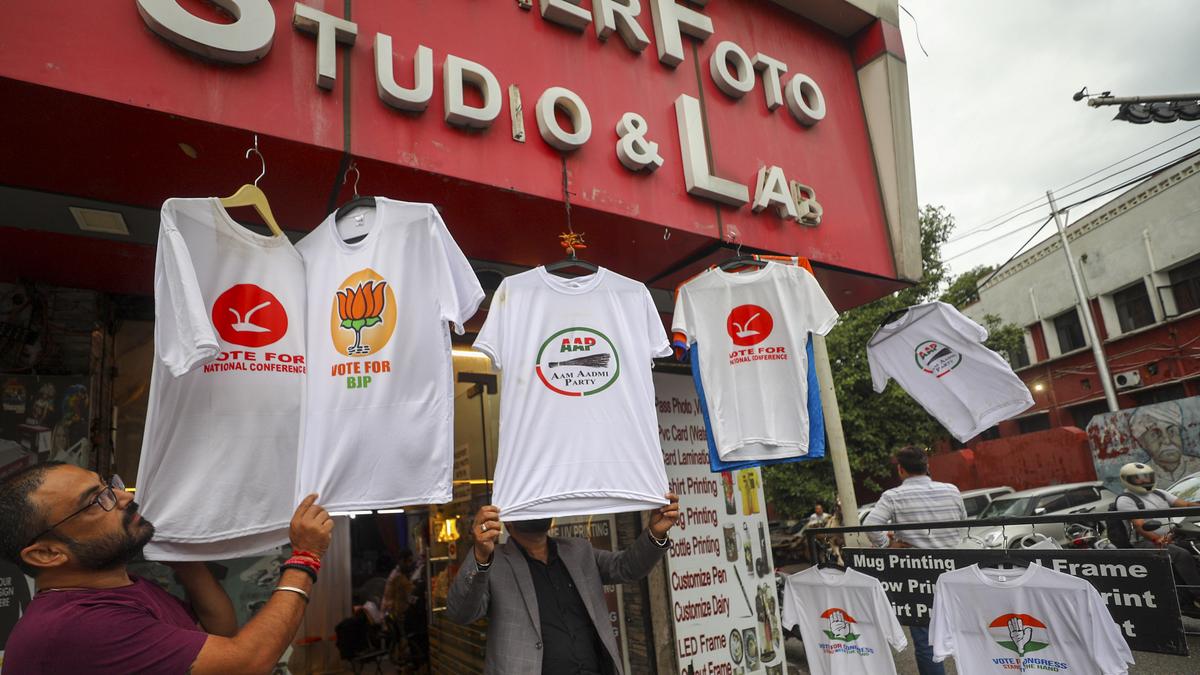
The past shaping the 2024 J&K Assembly elections Premium
The Hindu
J&K Assembly elections mark end of political stasis, with statehood demand uniting diverse regions, shaping electoral landscape.
The present Assembly elections ends the six-year political stasis in J&K. Expectedly, there is heightened political activity and interest among the electorate. The demand of statehood unites the entire former state with its huge ethnic, religious and geographical diversity. On surface, there is a plenty of newness around with new political actors, new constitutional realities and a new set of political realities. At the same time, when one digs deeper, J&K continues to remain a complex tangle with diverse ethnic groups and interplay of many forces and interests. Article 370 abrogation has not changed some of these structural realities and forces, and they still shape the selection of candidates and campaign narrative. They will possibly leave their imprint on the election result as well and broader future of this volatile region of South Asia.
In 1977 Assembly elections, Jammu and Kashmir Chief Minister Sheikh Abdullah had appealed to the people that they should be prepared to go hungry rather than beg for forty paise subsidy on rice from the central government. The center had taken away the subsidy given to the state and people wanted Sheikh to get the subsidy back. Sheikh refused to do so.
The National Conference (NC) swept 39 out of Kashmir’s 42 seats, seven of Jammu’s 32 and one of Ladakh’s two in the elections of June 1977, an electoral contest which was mainly fought between three major political parties namely National Conference, Indian National Congress and Janata Party. The elections is recorded as the first most free and fair elections in state’s history. The response from the people indicated that emotional and psychological appeals aimed at self-dignity are potent than material promises. Now, after forty-seven-years, a similar collective urge for self-respect unites not just the Kashmir Valley but also large sections of Jammu’s electorate as the two regions yearn for the restoration of complete statehood.
J&K was one of the largest princely states in British India and since independence the region has defined the peace and security challenge in South Asia. In terms of population, J&K is 20th out of 36 States and Union Territories but its elections has always commanded national as well as international attention. The present elections in J&K are no less significant than 1977 though the context is quite different. The State does not exist, with its special status, its own constitution and special flag all gone. At a practical level, there is no timeframe and, more importantly, no commitment to restoring full statehood. The promise to the Supreme court doesn’t have a definite date. This could mean Jammu and Kashmir may end up like Delhi, where ‘statehood’ means the perennial turf war between the central government and its LG.
Based on the experience of the last five-years, where the Assembly elections were delayed on one pretext or the other, the electorate doesn’t buy the center’s assurance of restoration of statehood. Still, the elections have electrified the environment. The aaya ram gaya ram (turncoating) is playing out with enthusiasm everyday across J&K and no political party is an exception. Candidates are leaving and joining the rival parties at the last moment on the condition of getting a party mandate.
Coming to specifics, the NC with its inter-generational cadre has an advantage in Central Kashmir (Srinagar and Budgam) both in the urban as well as rural areas. In the valley, the number 28 became important in the last three assembly segments as the NC in 2002, NC in 2009 and PDP in 2014 Assembly elections had this number. In north Kashmir, buoyant by his win in the 2024 Parliamentary elections, Engineer Rashid’s party Awami Ittehad Party expects to win a few segments, where the party has some structure that led to his victory in the Baramulla Parliamentary constituency. The ethnic mosaic of J&K doesn’t leave the valley untouched as one reaches north-west frontiers of the valley. Gujjars and Pahari speaking population inhabit peripheral segments of relatively homogenous valley such as Uri and Karen bordering Pakistan administered Jammu Kashmir, a region which is completely non-Kashmiri speaking region. Here, the NC has an upper hand because of the cadre.
In South Kashmir, the Peoples Democratic Party (PDP) is aiming to hold on to its base as it has done in the last three assembly elections. Jamaat-e-Islami allied individuals are contesting independently. Four of its former members filed their nomination papers as independent candidates in the first phase from Kulgam, Devsar, Zainapora and Pulwama segments. All the parties in valley are outspoken on removing ban on Jamaat-e-Islami. In this realm, it will be interesting to see how this impacts the fortunes of PDP as the Jamaat-e-Islami has favored the PDP since 2002 elections. The linkage originated in a particular context as the counter militancy wing of J&K police Special operations Group (SoG) targeted the Jamaat which was seen harboring Hizbul Mujaihdeen militants. The PDP had promised to disband SoG, though after coming to power the PDP merely changed the nomenclature. For all practical reasons, the Congress party’s stakes in the valley are in a few segments in South Kashmir.













